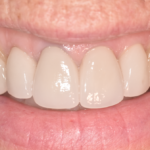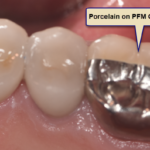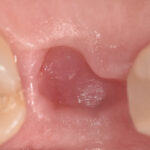In 1992 a review by the U.S. Public Health Service concluded that it was inappropriate to recommend restricting the use of dental amalgam, because current scientific evidence does not show that exposure to mercury from amalgam restorations poses a serious health risk in humans [13]. This is basically the same position as the ADA. They go on to say, “Sweden, Denmark, and Germany have proposed restrictions on dental amalgam use. They have done so in an effort to diminish both human exposure to and environmental release of mercury and not because of any documented health effects associated with exposure to dental amalgam.” This statement seems to contradict itself and even erode the validity of their claim that amalgams are safe.
Two recent studies by the University of Washington show that mercury in amalgam fillings does not cause health problems, even in young children. The research is referenced in the footnotes. In reply to this research Herbert Needleman M.D., who according to a Newsweek article is the scientist who did more than any other to document the toxicity of lead to developing brains, filed an editorial in JAMA, the Journal of the American Medical Association, in 2006. He argued, “Given limitations in design in the studies by Bellinger et al1 and DeRouen et al it was unscientific to assume a no-effect conclusion. The limitations were statistical power too low to find a relatively small harmful effect, follow-up too brief, and nondifferential errors in exposure measurement that would lead to a null bias. Neither Dr Ismail nor Dr Fung and colleagues addressed these criticisms.”
“Ismail states that neurobehavioral deficits in dental professionals have nothing to do with dental fillings and dismisses my mention of the possible effects of amalgam in the aging brain. The findings of neurological deficits in dental professionals were offered in evidence of the neurotoxicity of amalgam, whatever the source. Both trials1-2 followed up patients for a relatively short period. The potential effects of fetal toxicant exposure on neural function later in life is a subject gathering considerable attention.”

Carey O’Rielly DDS has been a practicing dentist for 35 years. He went to USC Dental School and Duke University for his undergraduate degree. He grew up in Laguna Beach and now lives in La Costa with his wife Victoria, who runs his office.
He began his career by owning and operating a network of six offices in the San Francisco Bay Area. Presently he owns a private holistic practice in North County San Diego’s Encinitas.
Dr. O started looking for solutions to his health challenges that resulted from the stress and environmental toxicity that built up over a ten year period running his dental network. He has dedicated himself to learning about oral systemic problems and how dentistry can affect your health. He has applied what he has learned over the last twenty years to ensure he, his staff and his patients are protected from the chemicals and toxic materials found in most dental offices. He has produced an environmentally friendly office that is also peaceful and calm.
He is an expert on dental materials having looked at hundreds of biocompatibility lab tests over the years. He has identified the most bio-friendly materials to use in his practice and which dental materials can be used to replace metal fillings and crowns, including BPA free and fluoride free ‘white’ fillings. He also uses metal-free Zirconia or ceramic implants and PRF (platelet-rich fibrin) grafting materials which come from the patient’s own blood.
Dr. O’Rielly teaches C.E. courses on the systemic effects of gum disease. He is an expert in using phase contrast microscopy for analyzing dental infections, where he shows patients what kind of microbes, i.e. bacteria, amoeba, and yeasts like candida are populating the mouth and affecting the body as a whole.
He has an educational blog and is writing a book on dental health called ‘Hidden Dental Infections: Healing Root Canals and Infected Teeth with the Erbium Laser’ where he discusses dental nutrition, toxic dental materials and the effects of old root canals on inflammation and overall health.










